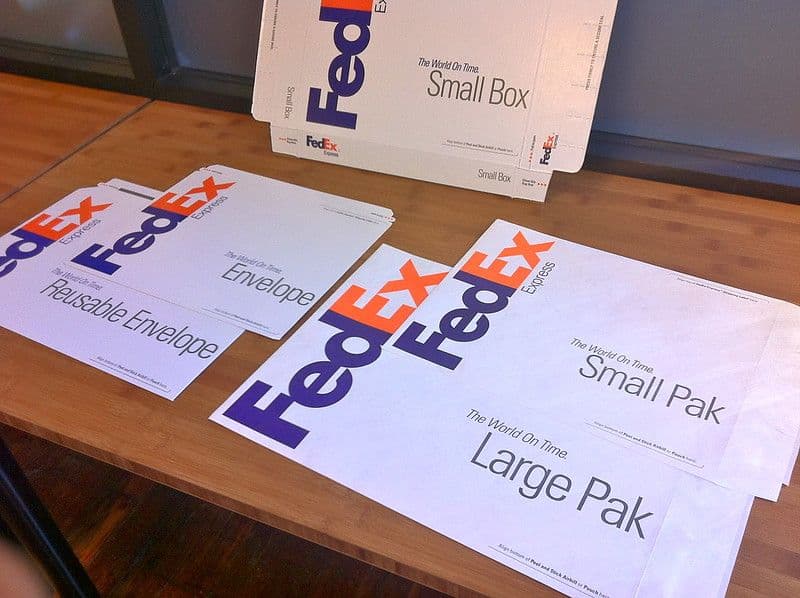Shipping costs aren't just about what your package weighs. Carriers often calculate dimensional weight, a formula that factors in the package's size, to determine pricing. Understanding how dimensional weight works and how carriers like UPS, FedEx, and USPS apply it is key to avoiding unexpected fees.
In this guide, we’ll cover how to calculate dimensional weight, carrier guidelines for size and weight limits, and tips to avoid dimensional weight surcharges so you can keep shipping costs under control.
What is Dimensional Weight?
Dimensional weight is a pricing method carriers use to account for the space a package occupies, not just its actual weight. It’s calculated by multiplying the package's length, width, and height, then dividing by a carrier-specific divisor.
Dimensional Weight Calculations by Carrier
Let’s break down how UPS, FedEx, and USPS determine dimensional weight:
- UPS: Charges based on the greater of actual weight or dimensional weight. Formula: (Length × Width × Height) / 166 for domestic, 139 for international shipments. Large, lightweight packages may be charged as heavier due to the space they occupy.
- FedEx: Uses a similar approach. Formula: (Length × Width × Height) / 139 for both domestic and international. Charges whichever is greater: actual or dimensional weight.
- USPS: Applies dimensional weight only on packages over 1 cubic foot shipped to Zones 5–9. Formula: (Length × Width × Height) / 166. For smaller packages or those shipped to Zones 1–4, charges are based on actual weight.
Step-by-Step Guide on How to Calculate Dimensional Weight
Follow these steps to calculate dimensional weight accurately:
Step 1: Measure your package:
Measure length, width, and height in inches, including any bulges or irregularities.
Step 2: Calculate cubic size:
Multiply length × width × height. For example, a 20 × 15 × 10 inch box equals 3,000 cubic inches.
Step 3: Apply the carrier’s formula
- UPS: divisor 166 (domestic), 139 (international).
- FedEx: divisor 139 (domestic and international).
- USPS: divisor 166 for packages over 1 cubic foot shipped to Zones 5–9.
Divide the cubic size by the divisor to get dimensional weight. Round up to the nearest whole number.
Using the example above with UPS’s domestic divisor: Dimensional Weight (lbs)= 3,000 cubic inches / 166 = 18.07 lbs = 19lbs.
Step 4: Compare weights:
Once you have the dimensional weight, compare it to the package’s actual weight. The carrier will charge based on whichever is greater.

Carrier Guidelines for Shipping Weight and Dimensions
Understanding each carrier's specific guidelines can help you select the best service and avoid unexpected fees. We made this little quick aid to help you choose better:
USPS
| Type | Dimensions | Max Weight |
|---|---|---|
| Envelope | 12.5 x 9.5 | 70 lbs |
| Small Box | 8.69 x 5.44 x 1.75 | 70 lbs |
| Medium Box | 11.25 x 8.75 x 6 (top loading) | 70 lbs |
| 14 x 12 x 3.5 (side loading) | 70 lbs | |
| Large Box | 12.25 x 12.25 x 6 | 70 lbs |
UPS
| Type | Dimensions | Max Weight |
|---|---|---|
| Extra Small Box | 4 x 4 x 4 to 8 x 6 x 2 | 70 lbs |
| Small box | 6 x 6 x 6 to 12 x 9 x 2 | 70 lbs |
| Medium box | 8 x 8 x 8 to 13 x 11 x 2 | 70 lbs |
| Large box | 10 x 10 x 10 to 15 x 11 x 6 | 70 lbs |
FedEx
| Type | Dimensions | Max Weight |
|---|---|---|
| Small box | 9.5 x 12.5 | 9 kg (approx. 20 lbs) |
| Medium box | 11.5 x 2.375 x 13.25 | 9 kg (approx. 20 lbs) |
| Large box | 12.25 x 12.25 x 6 | 13 kg (approx. 28 lbs) |
Common Mistakes and How to Avoid Dimensional Weight Charges
-Ignoring Dimensional Weight: Always calculate actual and dimensional weights to determine which will result in the higher cost. This is vital when considering shipping charges by weight.
-Incorrect Box Size: Using boxes that are too large increases dimensional weight charges, choose carrier-provided packaging when possible to minimize extra fees.
-Not Including Packaging Weight: Ensure that the packaging is accounted for in the total weight. Forgetting this can lead to miscalculations when using a shipping weight calculator. Remember that boxes and cushioning add up to the total weight of the package.
-FedEx Shipping Charges: Dimensional weight is applied to all packages, with oversized items incurring additional fees. Understanding FedEx's pricing structure and how dimensional weight impacts your shipping cost by weight is critical.
-UPS Shipping Charges have similar rules to FedEx, with specific surcharges for oversized items. Understanding these charges can help you avoid unexpected fees.
-USPS Shipping Charges: Dimensional weight applies to larger packages; the postal service also has flat-rate options that can be more economical for heavy items. Knowing USPS shipping rates per pound and their impact on your business can be a game-changer.
Tips for Measuring a Package:
-Use a Tape Measure: Measure the length, width, and height of the package in inches. These measurements will directly influence the shipping charges.
-Round-Up: Carriers typically round dimensions to the nearest whole number, so it's better to round up your measurements. This ensures that your dimensional weight calculation is accurate.
-Consider Flat Rate Options: For heavy items, flat-rate shipping can be a cost-effective solution. USPS shipping rates for boxes often offer flat-rate options that can save you money.
Use AI to Choose the Right Box and Avoid Extra Fees
One of the most common mistakes we see in shipping is underestimating the cost of lightweight items, especially when they’re packed in oversized boxes. Even if your package feels light, if the box is large, you could end up paying based on dimensional weight, not actual weight.
Take the case of one of our long-time customers. She was shipping branded tote bags, super light, under two pounds, but packed them in large, flat boxes to avoid creasing. The result? Shipping costs were nearly double what she expected, because the carriers calculated the price based on size, not weight.
This is where our AI Shipping Assistant comes in. If you’re not sure how much your package weighs or how to choose the right box, just describe the item. Our tool will estimate the weight and recommend the best packaging to keep your costs low. It also shows you discounted rates from FedEx, UPS, and USPS so you can generate your shipping label directly from the tool, and make smart shipping choices on the spot.
Final Thoughts on Box Shipping Dimensions
Understanding shipping dimensions and weight is critical for efficient and cost-effective shipping. Following the guidelines and tips, you can avoid common pitfalls and optimize your shipping strategy.
Elevate your shipping operations with Airpals, the leading multi-carrier shipping solution crafted to enhance your processes, reduce expenses, and increase customer satisfaction. Whether you're running a small business or overseeing a large enterprise, Airpals provides the tools and support necessary to ensure your shipments are managed with efficiency and precision.
Discover how Airpals can transform your business. Begin optimizing your shipping operations today with our powerful, user-friendly platform!
Frequently Asked Questions on Shipping Dimensions and Weight
How to calculate shipping weight?
To calculate shipping weight accurately, use a package weight scale and account for all packaging materials. This ensures that your shipping charges are based on accurate information.
Does shipping weight include the box?
Yes, always include the box's weight in your total shipping weight. This is essential for calculating accurate shipping charges by weight.
Does shipping go by weight or size?
Both. Carriers use either the actual or the dimensional weight, whichever is greater. To avoid overcharges, be sure to have an accurate scale when calculating shipping charges by weight.
What happens if shipping weight is wrong?
You may face surcharges, delays, or even package refusal. Shipping charges by weight aren't simple but require careful attention to detail.
What is dimensional weight?
Dimensional weight is a pricing technique used by carriers. It is calculated based on the size of the package rather than the actual weight. Calculating dimensional weight is crucial when shipping multiple packages that are the same size but not the same weight.




